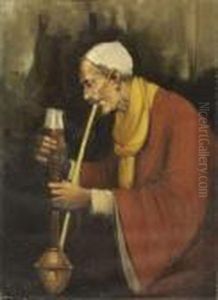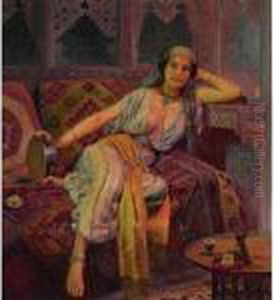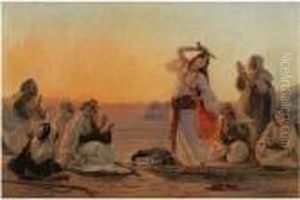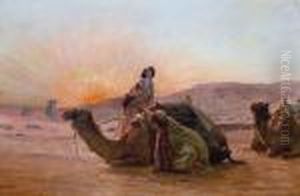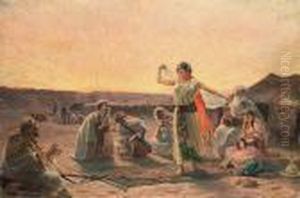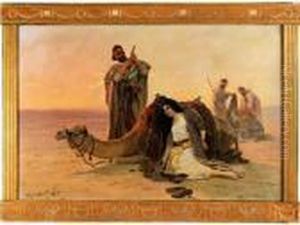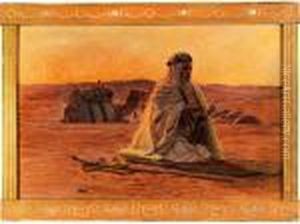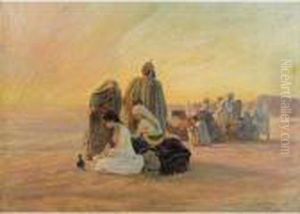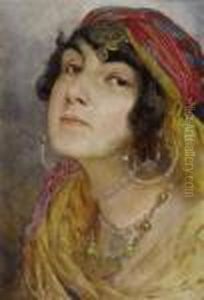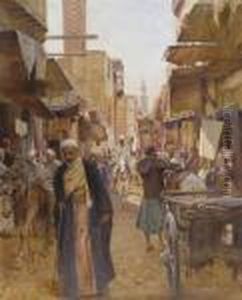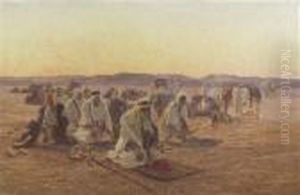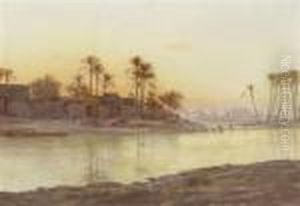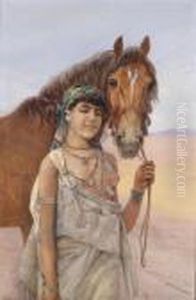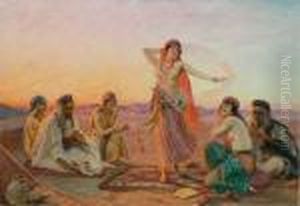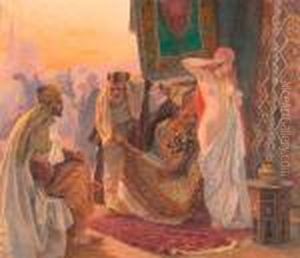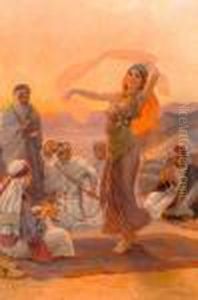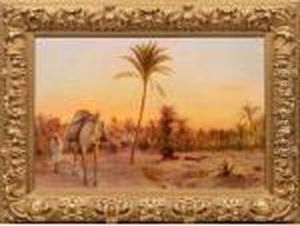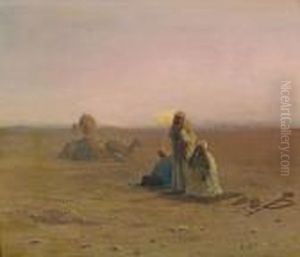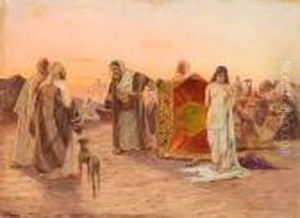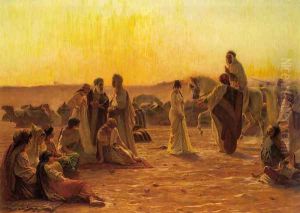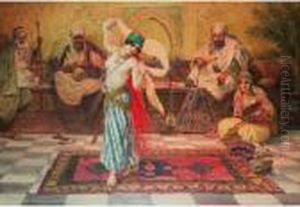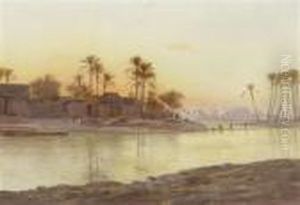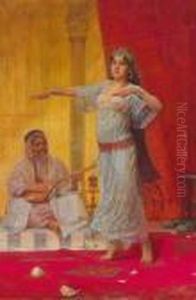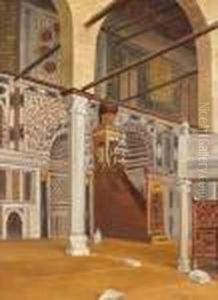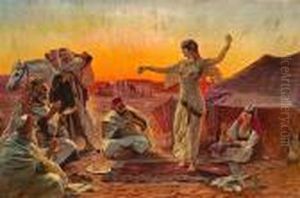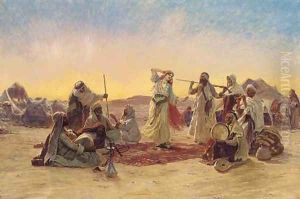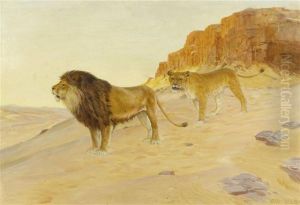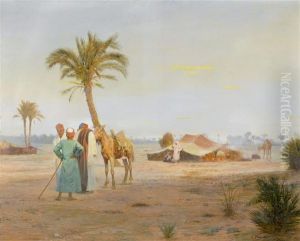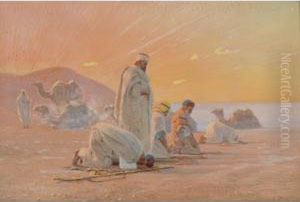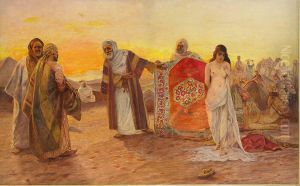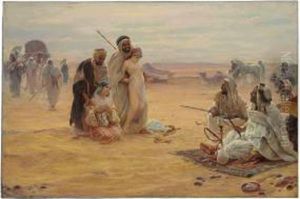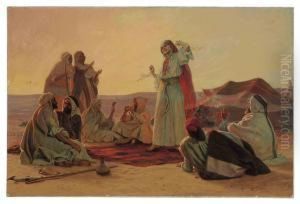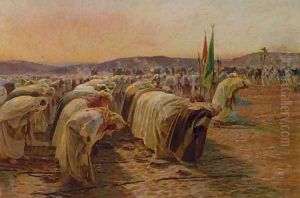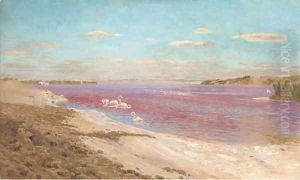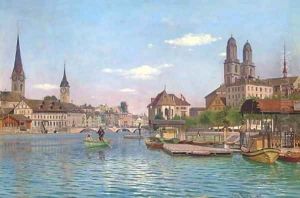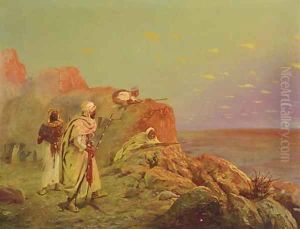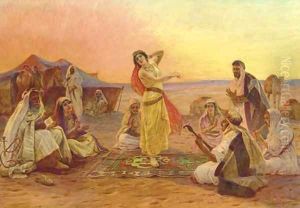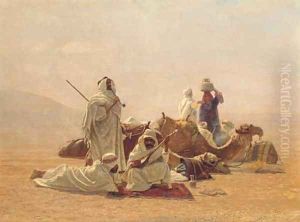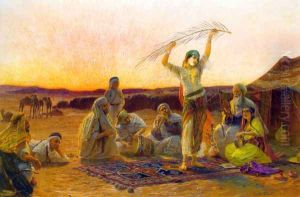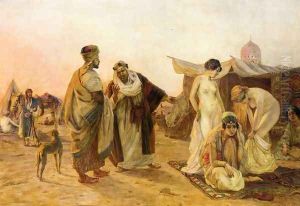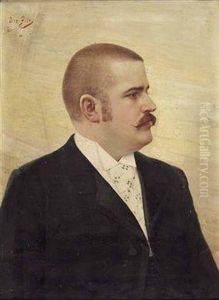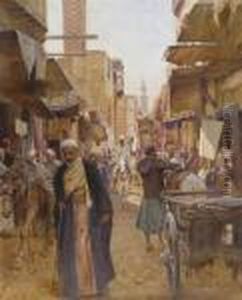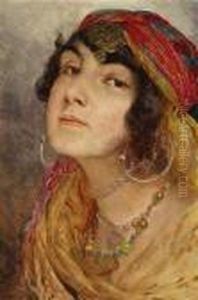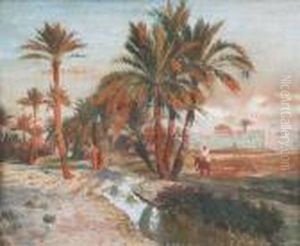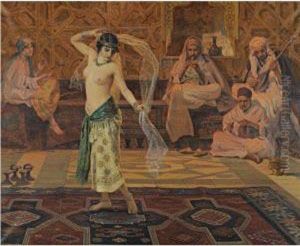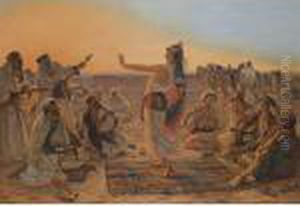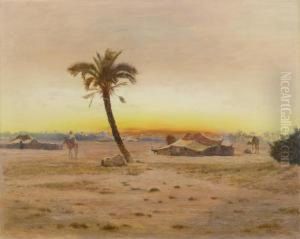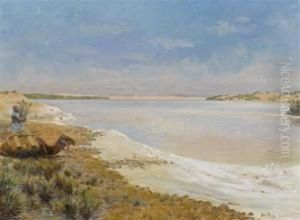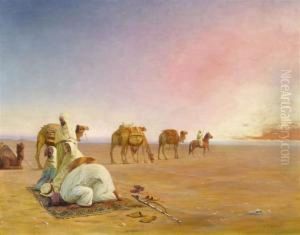Otto Pilny Paintings
Otto Pilny was a Swiss painter, renowned for his captivating depictions of Orientalist themes, specifically focusing on scenes from the life and landscapes of the Arabian desert. Born on June 28, 1866, in Prague, which was then part of the Austro-Hungarian Empire, Pilny showed an early interest in art. His family moved to Zurich, Switzerland, where he would grow up and develop his artistic talents.
Pilny's passion for the Orient was sparked by his travels to the Middle East, particularly Egypt and the Arabian Peninsula, in the late 19th and early 20th centuries. These journeys profoundly influenced his artistic direction, leading him to create works that captured the allure and mystique of the desert life and landscapes. His paintings are characterized by their detailed realism, vibrant colors, and the ability to convey the atmospheric beauty and cultural richness of the Arab world.
Throughout his career, Pilny enjoyed considerable success and recognition for his work. He was especially popular in Europe, where his paintings were exhibited in numerous galleries and acquired by collectors who were fascinated by the exoticism of the East. In addition to his paintings, Pilny also worked on illustrations for books and magazines, further disseminating images of the Orient to a Western audience.
Otto Pilny's contribution to Orientalist art is significant, as he brought a sense of authenticity and respect to his portrayals of the East. Unlike some of his contemporaries, who often depicted the Orient through a purely exotic and often inaccurate lens, Pilny's work was informed by his firsthand experiences and deep appreciation of the cultures he encountered. His legacy is preserved in the collections of various museums and in the admiration of art enthusiasts who continue to be enchanted by his depictions of the Arabian world.
Pilny passed away on July 21, 1936, in Zurich, leaving behind a body of work that continues to be celebrated for its beauty, sensitivity, and depth of understanding of the Orientalist theme. His paintings serve not only as artistic achievements but also as cultural bridges, offering viewers glimpses into a world that was, at the time, largely unknown to many in the West.
